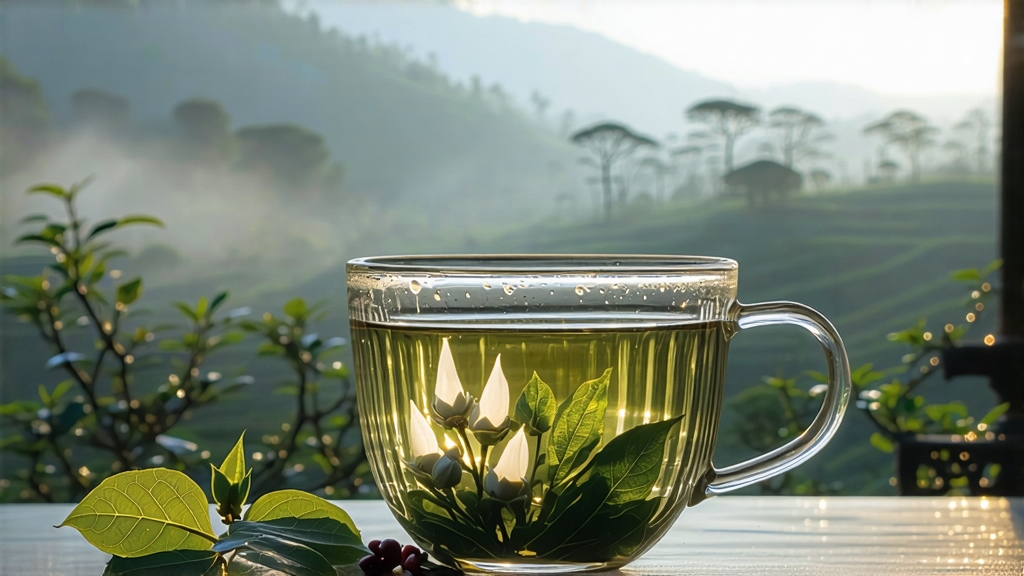
If green tea is the youthful face of Chinese tea culture, then white tea is its quiet, contemplative elder—an elder whose whispers carry centuries of mountain mist and starlight. Among the six major families of Chinese tea, white tea alone is defined less by the firing of leaf and more by the patience of time. Nowhere is this philosophy more exquisitely embodied than in Fuding Silver Needle, the silken apex of white tea whose very appearance suggests moonlight solidified into slender buds.
I. A History Written in Mist
Fuding county, hugging the northeastern coast of Fujian province, claims the dual blessing of maritime humidity and highland coolness. Local gazetteers first mention “white down tea” during the Song dynasty (960-1279), yet Silver Needle as a standardized tribute did not appear until the late Qing, when merchants seeking lighter, elegant tastes convinced monks on Taimu Mountain to abandon rolling and roasting in favor of prolonged natural withering. The imperial court in Beijing soon nicknamed the tea “Gong Mei Baimudan,” but the purest bud-only pickings—harvested only between mid-March and early April—were reserved for the emperor’s own porcelain gaiwan, hence the modern name Silver Needle (Bai Hao Yin Zhen).
II. Terroir: Where Granite Meets Sea Breeze
The micro-region responsible for the most luminous needles is a 15-kilometer radius around Taimu’s granite spine, elevation 400–800 m. Mica-rich soils drain quickly, forcing tea bushes (predominantly Fuding Da Bai Hao cultivar) to send sugars to the tender spring buds. At night, descending sea fog slows evaporation, allowing aromatic amino acids to concentrate. Locals insist that the buds “drink the fog,” a poetic shorthand for the enzymatic reactions that later translate into Silver Needle’s hallmark “cooling sweetness,” a sensation that blooms at the back of the throat minutes after swallowing.
III. Plucking Discipline: One Bud, No Leaf, No Mercy
Harvest begins when the morning dew still clings and the air temperature hovers between 12–18 °C. Pickers—usually women whose fingers are calloused yet nimble—snap off the unopened bud with a downward flick, ensuring the tiny “fish tail” (the two miniature leaves still sheathed) remains intact. A full kilogram of finished Silver Needle demands roughly 30,000 buds, all plucked within a seven-day window. Anything longer and lignification begins, robbing the tea of its creamy texture.
IV. The Invisible Craft: Withering as Meditation
Unlike other teas that reach for the wok or charcoal, Silver Needle is coaxed into being through 36–48 hours of quiet withering on bamboo racks. The process is deceptively simple: spread buds 2 cm deep, place racks in a sun-dappled pavilion whose louvers open and close according to humidity sensors, then retreat. In reality, the tea master is reading the sky the way a sailor reads tides. If the sun burns too hot, buds redden and acquire a hay-like bite; if humidity lingers, floral aromatics flatten into mulch. The goal is to reduce moisture to 8–10 % without ever letting the temperature exceed 35 °C, preserving the oxidative enzymes that will continue to mature the tea slowly over years—white tea is never truly “finished,” only paused.
V. The Five Virtues of a Perfect Needle
- Silvery Down: A velvety cloak of trichomes signals high theanine content.
- Needle Shape: Straight, uniform, tip intact—no fish hooks or bends from careless handling.
- Pale Jade Infusion: Not straw yellow; the liquor should resemble white Burgundy kissed by morning light.
- Cooling Mouthfeel: A menthol-like draft across the palate, what the Chinese call “sheng jin.”
- Lingering Sweet Corn Note: A gentle echo of baby corn milk, not roasted maize.
VI. Brewing: Let the Buds Swim, Not Drown
Western mugs murder Silver Needle; instead, choose a tall glass or a 120 ml gaiwan to watch the choreography. Ratio: 1 g per 20 ml. Water: 80 °C—any hotter scalds the down, any cooler fails to awaken the amino acids. First steep: 30 seconds, barely enough to tint the water; second: 45